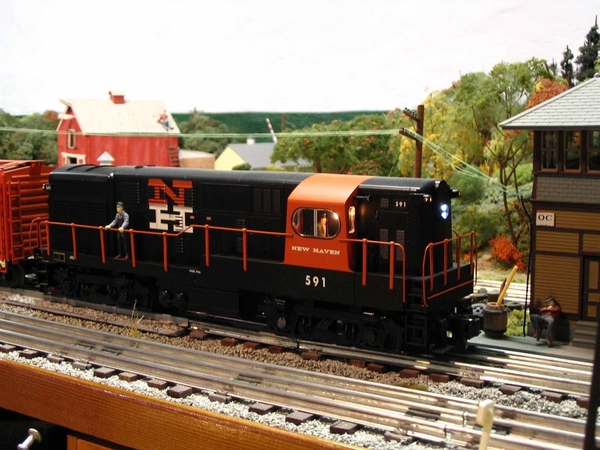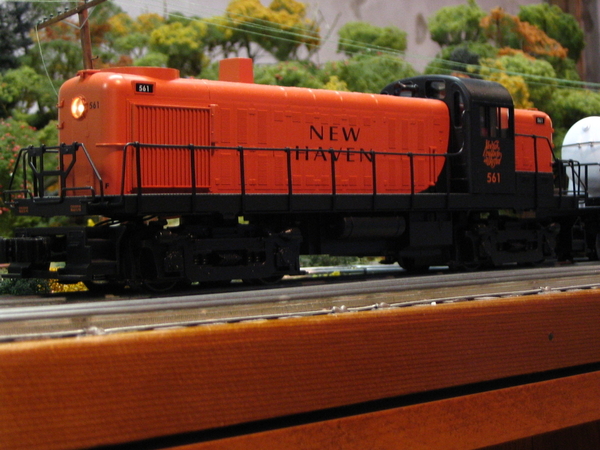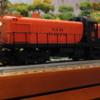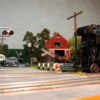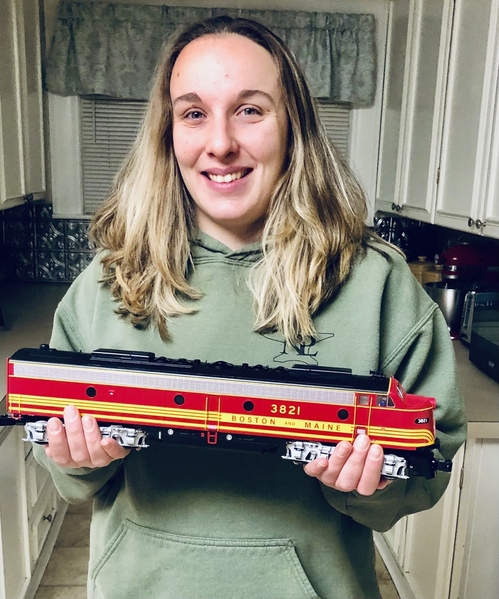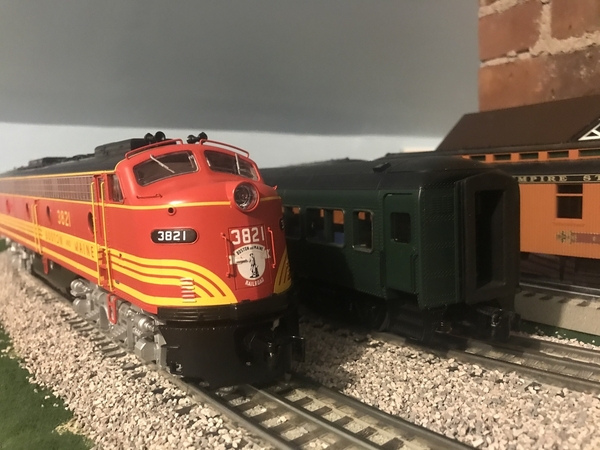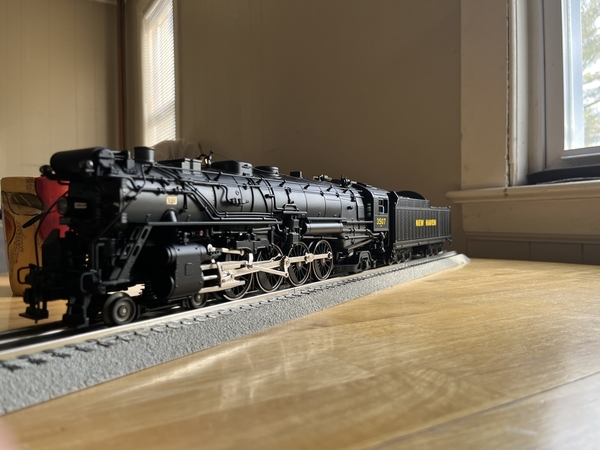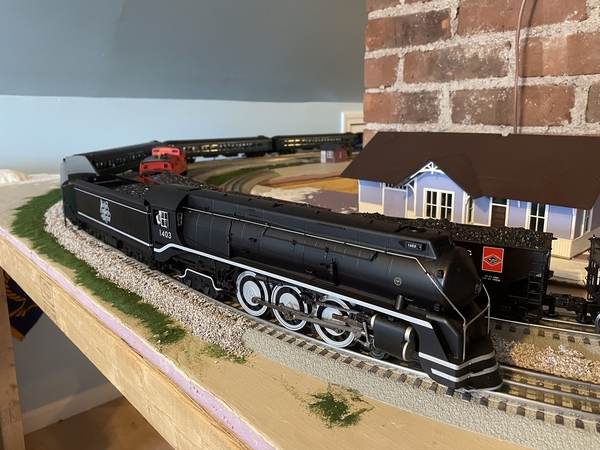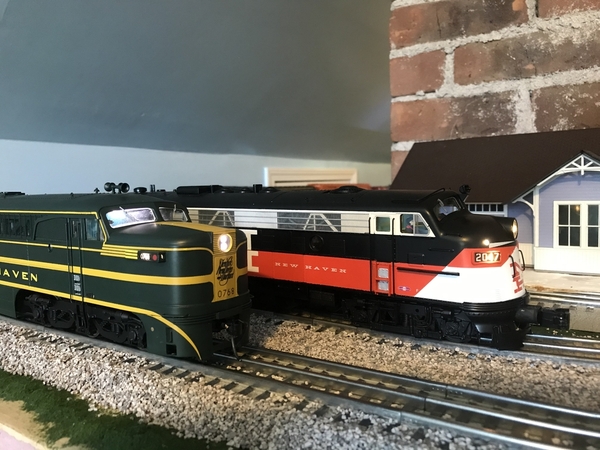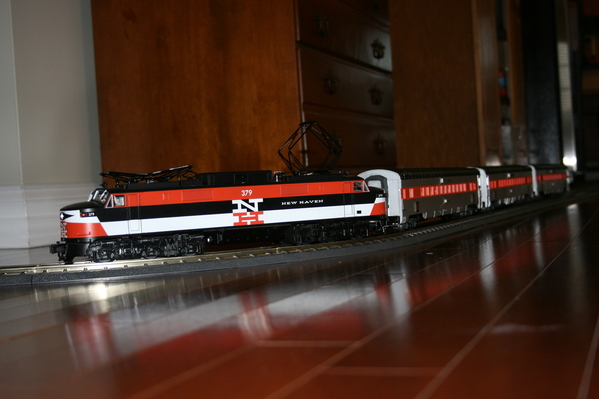I've got two of the three roads covered. Below are a few of my New Haven diesels (Lionel H1644 and Atlas RS3) and a KLine B&A Berk passing Taft Orchard. It wouldnt be New England without a red barn and an apple orchard. Regards. Joe
KD. Nice RDC
Is everyone aware that Sunset is taking reservations for a new run of RDC 1 and 2 in NH and B&M among other roads. I have been looking for one ever since seeing Mel’s in the “any new haven fans” thread
Nate
must be nice to have your wife in this hobby with you
KD, Uthinks correctly.
New Haven Railroad EP-5 Electric “Motor” #371.
The New Haven Railroad’s electrification went into operation in 1907 for 21 miles between Woodlawn, New York and Stamford, Connecticut following a ban on steam locomotives in New York City enacted in 1903 and effective in 1908. The electrification was extended to New Haven in 1914, 72 miles from Grand Central Terminal. Steam locomotives, and later diesels, covered the remaining 157 miles to Boston until Amtrak completed its electrification around 2000, so a locomotive change was part of the scene at New Haven for decades. I used to stand on the platforms at New Haven and watch as the change was done.
The EP-5s began passenger service between New Haven and Grand Central Terminal in 1955, the last NYNH&HRR electric “motors” designed for that purpose. As with earlier New Haven electric passenger power, they operated on overhead 11,000 Volt AC catenary between New Haven and Woodlawn and then transitioned at speed to 650 Volt DC third-rail power for the remaining 12 miles into GCT on the tracks of the New York Central’s Harlem Division.
By the 1950s, the New Haven needed new electric passenger power and contracted with General Electric for a 4,000 horsepower, rectifier-equipped “motor.” They were delivered during the administration of Patrick McGinnis, whose wife was instrumental in creating the modern red-black-white paint schemes and block-lettered “NH” logo that became symbols of the railroad and subsequently appeared on many of its diesel locomotives.
The EP-5s weighed 350,500 pounds and produced 34,100 pounds of tractive force with 87,000 pounds allowed momentarily. They were geared for 105 miles-per-hour and ran at up to 90 miles-per-hour on the railroad, but the speed limit was 70. On the New Haven, they were known as “jets” because of the loud noise from blowers that cooled the electrical components. The EP-5s suffered from deferred maintenance due to the 1959 closing of the Van Nest Shops (in the Bronx, NY) and the New Haven’s deteriorating financial condition during the 1950s and ‘60s. When the New Haven was merged into the Penn Central in 1969, only six of the ten EP-5s were still running. All ten were scrapped by 1979.
In my opinion, the MTH scale-sized EP-5 is a landmark O gauge model, just as the Lionel version was in the 1950s. My model of New Haven EP-5 #371 was made by MTH Premier (20-2195-1) and was offered in the 1999 Volume 1 catalog at an MSRP of $349.95. As a New Haven fan, this model was one of my first modern O gauge acquisitions and it has been running on my model railroad for 23 years. It has PS1 and a BCR but no speed control. The sounds, including the cooling blowers, are authentic and loud. The PS1 electronics are satisfactory to me and have been trouble-free. Even without speed control, a well-broken-in EP-5 model with PS1 runs smoothly at low speeds, as seen in the second video.
By the 1950s, the precarious financial condition of the New Haven Railroad resulted in trains made up of multiple types of passenger cars, which is how I run model trains behind my EP-5. Attached below are pictures of the three types of passenger cars in the consist of my EP-5 model, including the 1949 fluted stainless steel sleeping car “Shippan Point” by MTH; the 1934/35 Pullman-Standard “American-Flyer” lightweight passenger car #8204 by Weaver Models; and the 1929 heavyweight parlor-lounge car “Flying Cloud,” also by MTH.
MELGAR
Attachments
Mel, thank you for another interesting history lesson. I would have been a good student if I studied railroads!
Here’s a photo of my K-Line NH EP-5 being assisted by “DOCKSIDER” star 0-6-0T no. X-8688. A friend has the MTH model; I believe the K-Line is it’s equal, but I haven’t examined them side by side.
My engine operates erratically with cruise engaged under conventional control, so I shut that feature off. It runs smoothly that way, but I have be careful with the throttle. The reduced power consumption with cruise off turns my model into a true “jet”!
John
Attachments
Bicuittag. Your models are beautiful. Pls keep posting
Mel. I love seeing pics of your gorgeous railroad. Your history lessons add so much to my enjoyment of the hobby
MTH DL109/110 with K-Line 21" passenger cars.
Ken
@Steam Crazy posted:...snip... A friend has the MTH model; I believe the K-Line is it’s equal, but I haven’t examined them side by side. ...snip...John
Several folks (into O scale brass) have told me the the K-Line EP-5 betters the Overland brass one so it should be nicer than the MTH one. The last Stout auction had an Overland one up for bid so I was able to scrutinize the photos and they were right.
Dave, the most prominent difference to me is the window trim. The K-Line is simulated stainless/aluminum while the MTH is black. I don’t know which (or both) is prototypical, but I like the looks of the bright trim.
John
@Steam Crazy posted:Dave, the most prominent difference to me is the window trim. The K-Line is simulated stainless/aluminum while the MTH is black. I don’t know which (or both) is prototypical, but I like the looks of the bright trim.
John
John,
I have yet to find a picture of an EP-5 that doesn't show the aluminum strip around the front windows. I think the K-Line model is more accurate.
MELGAR
Mel, what’s important is we have nice models that we enjoy running, The subtle details really don’t matter!
John
John and Mel. Seems like MTH went with the aluminum window trim with there PS3 run. You can see it in the pictures of mine that I have posted




